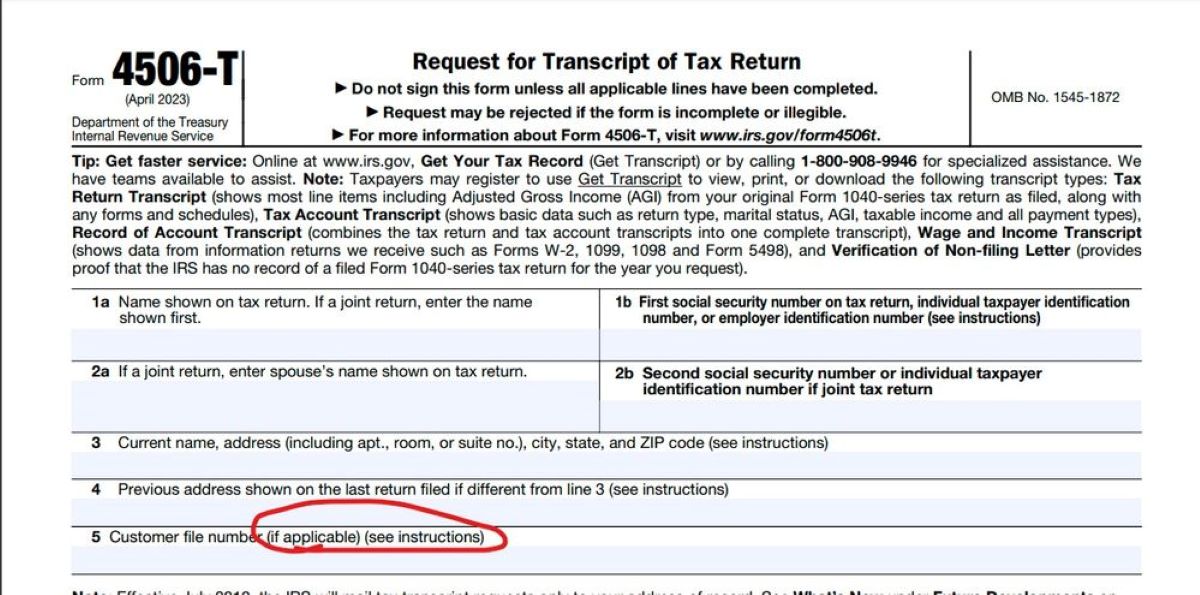

Finance
How To Track Stocks
Published: January 17, 2024
Learn how to track stocks in the finance industry. Maximize your understanding of financial markets and make informed investment decisions.
(Many of the links in this article redirect to a specific reviewed product. Your purchase of these products through affiliate links helps to generate commission for LiveWell, at no extra cost. Learn more)
Table of Contents
Introduction
Welcome to the world of stock tracking! In the fast-paced and ever-changing world of finance, keeping a close eye on the performance and movements of stocks is crucial for investors and enthusiasts alike. Whether you’re a seasoned trader or an individual looking to dip your toes in the stock market, understanding how to effectively track stocks is essential for making informed decisions.
Tracking stocks involves monitoring their price movements, performance metrics, company news, and market trends. This allows investors to identify potential opportunities, make informed investment decisions, and stay ahead of market trends. With advancements in technology, tracking stocks has become more accessible and convenient than ever before.
So why is tracking stocks so important? Stocks are a widely popular investment option, offering the potential for significant returns. However, the stock market can be volatile and unpredictable. By tracking stocks, investors can gain insight into market trends, evaluate the performance of individual companies, and make informed decisions based on thorough analysis.
Historically, tracking stocks was a time-consuming and labor-intensive process. Investors relied on sources like newspapers, financial publications, and company annual reports to gather relevant information. However, the digital era has revolutionized stock tracking, making it easier and more efficient than ever.
In this comprehensive guide, we will explore different methods to track stocks, including fundamental analysis, technical analysis, and news and market analysis. We will also discuss the benefits of using stock tracking apps and websites, setting up stock alerts, and tracking stocks through brokerage accounts. By the end of this guide, you’ll have a solid understanding of how to effectively track stocks and stay ahead in the dynamic world of finance.
Importance of Tracking Stocks
Tracking stocks plays a vital role in the success of any investor. Here are the key reasons why tracking stocks is important:
- Identifying Investment Opportunities: By tracking stocks, investors can identify potential investment opportunities. Monitoring stock performance, financial indicators, and market trends allows investors to spot undervalued stocks or sectors with growth potential.
- Making Informed Decisions: Keeping a close eye on stocks provides investors with valuable information to make informed decisions. By analyzing company financials, industry news, and market trends, investors can evaluate the future prospects of a stock and its potential for growth or decline.
- Managing Risk: Tracking stocks helps investors manage risk. By monitoring the performance of stocks in their portfolio, investors can identify stocks that may be underperforming or facing potential risks. This allows them to take proactive steps to mitigate risk, such as diversification or selling stocks that show signs of weakness.
- Maximizing Returns: Successful stock tracking can lead to higher returns. By monitoring stocks, investors can identify opportunities to buy low and sell high. This allows them to maximize their returns by capitalizing on market fluctuations and well-timed trading decisions.
- Staying Ahead of Market Trends: The stock market is influenced by various factors, including economic conditions, industry trends, and geopolitical events. By tracking stocks, investors can stay ahead of market trends and adjust their investment strategy accordingly. This ensures that they are well-positioned to take advantage of emerging opportunities or mitigate the impact of potential market downturns.
In summary, tracking stocks is essential for investors to identify investment opportunities, make informed decisions, manage risk, maximize returns, and stay ahead of market trends. In the next sections, we will explore various methods and tools that can help you effectively track stocks.
Different Methods to Track Stocks
There are several methods and techniques available to track stocks effectively. Each method provides unique insights into stock performance and can be used in combination to form a comprehensive stock tracking strategy. Here are three popular methods:
- Fundamental Analysis: Fundamental analysis involves evaluating a company’s financial health and performance to determine its intrinsic value. This method focuses on analyzing financial statements, including the balance sheet, income statement, and cash flow statement. By assessing key financial ratios, such as price-to-earnings ratio, return on equity, and debt-to-equity ratio, investors can gain insights into a company’s profitability, growth potential, and overall health. Fundamental analysis also takes into account qualitative factors, such as management quality, market competitiveness, and industry trends.
- Technical Analysis: Technical analysis relies on studying price and volume patterns in stock charts to predict future price movements. This method uses various tools and indicators, such as moving averages, trend lines, and oscillators, to identify buying and selling signals. Technical analysts believe that stock price movements follow trends and patterns that can be identified and utilized for trading decisions. By understanding support and resistance levels, trend reversals, and market sentiment, investors can make decisions based on historical price data.
- News and Market Analysis: Staying informed about market news, economic indicators, and industry developments is crucial for successful stock tracking. This method involves regularly scanning financial news sources, company announcements, and market reports to gather relevant information. By understanding market trends, geopolitical events, and industry shifts, investors can assess the impact on stock performance and adjust their investment strategy accordingly. News and market analysis helps investors stay up to date with the latest developments that may influence stock prices.
It’s important to note that no single method is foolproof, and different methods may be more suitable for different investors depending on their risk tolerance, investment goals, and time commitment. Some investors may prefer a combination of fundamental and technical analysis, while others may rely more heavily on news and market analysis. Experimenting with different methods and finding the approach that aligns with your investment style and objectives is key.
In the next sections, we will explore how to implement these methods effectively and utilize stock tracking apps, websites, and brokerage accounts to enhance your stock tracking capabilities.
Fundamental Analysis
Fundamental analysis is a method of evaluating stocks based on their intrinsic value by analyzing various financial and qualitative factors. It focuses on understanding the financial health and performance of a company to assess its worth and potential for growth. Here are the key components of fundamental analysis:
- Financial Statements: The foundation of fundamental analysis lies in examining a company’s financial statements, which include the balance sheet, income statement, and cash flow statement. These statements provide insights into the company’s assets, liabilities, revenues, expenses, and cash flow. By analyzing the financial statements, investors can assess the company’s financial stability, profitability, and ability to generate cash flow.
- Key Financial Ratios: Fundamental analysis involves calculating and interpreting key financial ratios to evaluate a company’s performance. Common financial ratios include the price-to-earnings (P/E) ratio, return on equity (ROE), debt-to-equity ratio, and earnings per share (EPS). These ratios help investors assess the company’s profitability, efficiency, leverage, and market valuation.
- Qualitative Analysis: In addition to financials, fundamental analysis also considers qualitative factors. This includes evaluating the company’s management team, competitive advantage, industry position, market trends, and potential risks. Understanding the qualitative aspects of a company helps investors assess the long-term sustainability and growth potential.
- Industry and Market Analysis: Fundamental analysis extends beyond analyzing individual companies and includes evaluating the industry and overall market conditions. Understanding industry trends, market demand, and competitive landscape allows investors to assess the growth potential and competitive position of the company being analyzed.
Implementing fundamental analysis requires thorough research and access to reliable financial information. Investors can gather financial data from company reports, financial news sources, and financial websites. It is crucial to stay updated with the latest information and review the company’s financials periodically to track performance over time.
It’s important to note that fundamental analysis is a long-term approach that focuses on the underlying value of a company rather than short-term price fluctuations. By conducting detailed fundamental analysis, investors can identify undervalued stocks or companies with strong growth potential relative to their current market price. However, it is crucial to combine fundamental analysis with other methods, such as technical analysis and news analysis, to make well-informed investment decisions.
In the next sections, we will explore technical analysis and news and market analysis methods to further enhance your stock tracking abilities.
Technical Analysis
Technical analysis is a method of evaluating stocks based on past price movements and volume trends to predict future price movements. This approach relies on the assumption that historical price patterns repeat themselves and can be used to foresee future price changes. Here are the key components of technical analysis:
- Stock Charts: Technical analysis relies heavily on stock charts, which display historical price and volume data. These charts provide visual representations of a stock’s price movements over different timeframes, such as daily, weekly, or monthly. By analyzing charts, investors can identify trends, support and resistance levels, and chart patterns that may indicate potential buying or selling opportunities.
- Indicators and Oscillators: Technical analysis utilizes various indicators and oscillators to generate trading signals. Moving averages, for example, help identify trend directions and potential support or resistance levels. Other popular indicators include relative strength index (RSI), stochastic oscillator, and MACD (moving average convergence divergence). These indicators provide insights into overbought or oversold conditions, trend strength, and potential trend reversals.
- Chart Patterns: Chart patterns are specific formations that indicate potential price movements. Examples of chart patterns include double tops and bottoms, head and shoulders, triangles, and flags. By recognizing these patterns, investors can anticipate potential breakouts, trend reversals, or continuation of existing trends.
- Volume Analysis: Volume refers to the number of shares traded in a stock. Volume analysis involves studying the relationship between price movements and trading volume. High trading volume during price increases suggests buying pressure, while high volume during price decreases may indicate selling pressure. Volume analysis helps confirm the strength of price movements and identify potential trend reversals.
Technical analysis is widely used by traders and short-term investors who aim to profit from short-term price fluctuations. It helps identify entry and exit points for trades and provides insights into potential price targets. However, it is important to note that technical analysis is not always accurate, as price movements are influenced by various factors and can be subject to market manipulation.
To implement technical analysis effectively, investors need access to reliable stock charts and technical analysis tools. Many online platforms and brokerage accounts provide these tools, allowing investors to apply various indicators and analyze stock charts. Learning and understanding different technical analysis techniques and patterns is also essential for using this method successfully.
In the next section, we will explore news and market analysis as another important method to track stocks and make informed investment decisions.
News and Market Analysis
News and market analysis are crucial components of stock tracking. Staying informed about the latest news, economic events, industry developments, and market trends is essential for making informed investment decisions. Here’s why news and market analysis are important:
- Market Trends: News and market analysis provide valuable insights into the overall market conditions and trends. Understanding market sentiment, economic indicators, and industry shifts allows investors to assess the broader market’s potential impact on individual stocks. By keeping an eye on market trends, investors can better position themselves for potential opportunities or risks.
- Company News: Tracking company news is vital to stay up to date with any developments that may affect a stock’s performance. Company announcements, earnings reports, product launches, management changes, mergers and acquisitions, and regulatory updates can have a significant impact on stock prices. Analyzing company news helps investors gauge the financial health, growth prospects, and potential risks associated with a particular stock.
- Industry Analysis: Understanding industry developments and trends is crucial for stock tracking. Industry analysis involves monitoring industry-specific news, regulatory changes, technological advancements, and competitive dynamics. By assessing the competitive landscape and identifying potential disruptors or growth sectors, investors can make informed decisions about stocks within a specific industry.
- Economic Events: News and analysis about economic events, such as government policies, interest rate changes, unemployment data, and GDP growth, can significantly impact the overall market and individual stocks. Investors need to stay updated on these events and understand their potential effects on stock performance. Economic events can create opportunities or risks depending on the industry and market conditions.
To stay informed, investors can rely on financial news outlets, dedicated market analysis websites, and reputable financial publications. Additionally, social media platforms can provide real-time updates and discussions about market trends and relevant news. It’s important to use reliable sources and evaluate information critically to filter out noise and focus on actionable insights.
Combining news and market analysis with fundamental and technical analysis provides a comprehensive approach to stock tracking. By considering both the micro and macro factors that influence stock performance, investors can make more accurate assessments and better predict stock movements.
In the next sections, we will explore how stock tracking apps, setting up stock alerts, and utilizing brokerage accounts can further enhance your ability to track stocks effectively.
Using Stock Tracking Apps and Websites
Stock tracking apps and websites have revolutionized the way investors monitor and analyze stocks. These platforms provide convenient access to real-time stock data, advanced charting tools, financial news, and analysis. Here are the key benefits of using stock tracking apps and websites:
- Real-Time Data: Stock tracking apps and websites offer real-time stock quotes, allowing investors to stay updated on price movements and trading activity. This enables prompt decision-making and minimizes the risk of outdated information affecting investment choices.
- Advanced Charting Tools: Many stock tracking apps and websites provide advanced charting tools, allowing users to analyze price trends, apply technical indicators, and spot chart patterns. These tools help investors identify potential entry and exit points and make informed trading decisions.
- Financial News and Analysis: Stock tracking platforms often incorporate financial news and analysis from reputable sources, enabling users to access up-to-date market information and stay informed about relevant developments. This helps investors understand the factors influencing stock performance and make well-informed investment decisions.
- Portfolio Tracking: Stock tracking apps and websites typically offer portfolio management features, allowing investors to track the performance of their holdings, monitor gains and losses, and assess overall portfolio diversification. Some platforms even provide customizable alerts and notifications for portfolio movements.
- Watchlists and Customization: Users can create personalized watchlists to track specific stocks or sectors of interest. This feature enables users to easily monitor the performance of selected stocks and stay informed about any relevant news or updates regarding those companies.
- Educational Resources: Many stock tracking platforms offer educational resources, including tutorials, articles, and videos, to help users improve their knowledge of investing and stock analysis. These resources can be incredibly valuable for beginners or those looking to enhance their investment skills.
When choosing a stock tracking app or website, it’s essential to consider factors such as user interface, reliability, security, and the availability of features that align with your investment needs. Popular stock tracking apps and websites include Yahoo Finance, Google Finance, Bloomberg, and investing.com, among others.
By using stock tracking apps and websites, investors can gain access to real-time data, advanced charting tools, financial news, and analysis, enhancing their ability to track and analyze stocks effectively.
In the next section, we will explore how to set up stock alerts to stay informed about important price movements and news updates.
Setting Up Stock Alerts
Stock alerts are a valuable tool for staying informed about important price movements and news updates concerning specific stocks. By setting up stock alerts, investors can receive notifications when a stock reaches a certain price level or when there is significant news related to the stock. Here’s how to set up stock alerts:
- Choose Alert Type: Determine the type of stock alert you want to set up. Price alerts notify you when a stock reaches a specific price level, such as a target price that you have set. News alerts notify you when there are important news articles or updates related to a particular stock.
- Select Stocks: Identify the stocks for which you want to set up alerts. Focus on stocks that are of interest to you or those in your investment portfolio. You can set up alerts for individual stocks, or if using a stock tracking app or website, create a watchlist to monitor multiple stocks.
- Set Price Levels: If you’re setting up price alerts, specify the price levels at which you want to be notified. This can include target prices for buying or selling stocks, as well as price threshold levels where you want to be alerted about significant price changes.
- Configure News Alerts: If you want to receive news alerts, specify the types of news or events that you want to be notified about. This can include earnings releases, regulatory announcements, or other news that may impact the stock price or your investment decisions.
- Choose Notification Method: Determine how you want to receive stock alerts. Options typically include email, push notifications on your mobile device, or SMS alerts. Choose the notification method that is most convenient and easily accessible for you.
- Utilize Stock Tracking Apps or Websites: Many stock tracking apps and websites provide alert features, allowing users to set up and manage stock alerts within the platform. These platforms often offer customizable alert settings and the ability to receive real-time updates.
Setting up stock alerts helps investors stay informed and take timely action based on price movements and relevant news. By receiving notifications, investors can react to market opportunities, adjust their investment strategy, or decide when to buy or sell a particular stock.
However, it’s important to note that while stock alerts can be helpful, they should not be the sole basis for investment decisions. Always conduct thorough research and analysis before making any investment moves.
In the next section, we will explore how tracking stocks through brokerage accounts can streamline the stock tracking process and provide additional tools and resources.
Tracking Stocks through Brokerage Accounts
Brokerage accounts offer a comprehensive platform for tracking and managing stocks. In addition to facilitating stock trades, brokerage accounts provide a range of tools and resources to help investors effectively track their investments. Here’s how you can leverage brokerage accounts for stock tracking:
- Portfolio Management: Brokerage accounts offer portfolio management features that allow investors to track the performance of their holdings. These features provide a holistic view of your investments, including current market value, gain/loss percentage, and overall portfolio allocation. This enables you to monitor the performance of your stocks in real-time.
- Real-Time Stock Data: Brokerage accounts provide access to real-time stock data, including bid-ask prices, volume, and other crucial information. This allows you to stay updated on the latest price movements and make informed decisions based on the most current data available.
- Research and Analysis Tools: Many brokerage accounts offer research and analysis tools to help investors track stocks effectively. These tools provide market news, analyst reports, research insights, and fundamental data. Some brokerages even provide their proprietary research reports, which can be valuable for making informed investment decisions.
- Stock Screening: Brokerage accounts often provide stock screening tools that allow you to filter stocks based on specific criteria, such as market capitalization, industry, financial ratios, and performance metrics. This helps you identify potential investment opportunities based on your preferred parameters.
- Trade Execution and Order Management: Through brokerage accounts, you can place trades and manage your orders efficiently. This includes setting limit or stop orders, tracking open orders, and reviewing trade history. The ability to place trades directly from your brokerage account streamlines the process of acting on your stock tracking analysis.
- Educational Resources: Brokerage accounts often offer educational resources, such as webinars, tutorials, and articles, to help investors enhance their knowledge and skills. These resources can provide valuable insights into stock tracking strategies, technical analysis, and fundamental analysis.
Leveraging a brokerage account for stock tracking streamlines the process by consolidating all the necessary tools and resources in one platform. It allows investors to monitor their investments, access real-time data, conduct research and analysis, and execute trades efficiently.
When selecting a brokerage account, consider factors such as fees, trading platform usability, research offerings, customer support, and available investment options. The choice of brokerage account ultimately depends on your specific needs and preferences as an investor.
In the final section, we will summarize the benefits of tracking stocks and highlight the importance of incorporating these methods into your investment strategy.
Benefits of Tracking Stocks
Tracking stocks provides several benefits for investors. By monitoring stock performance, conducting analysis, and staying informed about market trends, investors can make informed investment decisions and maximize their chances of success. Here are the key benefits of tracking stocks:
- Identifying Opportunities: Tracking stocks helps investors identify investment opportunities. By analyzing stock performance and market trends, investors can spot undervalued stocks or sectors with growth potential. This allows them to capitalize on the potential for future returns.
- Making Informed Decisions: Monitoring stocks enables investors to make well-informed investment decisions. By analyzing financials, industry trends, and news updates, investors gain insights into a stock’s potential for growth or decline. This helps them choose stocks that align with their investment goals and risk tolerance.
- Managing Risk: Tracking stocks allows investors to effectively manage risk. By monitoring stock performance and market trends, investors can identify stocks that may be underperforming or facing potential risks. This enables them to take proactive steps, such as diversification or selling underperforming stocks, to mitigate risk and protect their investments.
- Maximizing Returns: Successful stock tracking can lead to higher returns. By monitoring stocks and identifying opportunities to buy low and sell high, investors can maximize their returns by capitalizing on market fluctuations and well-timed trading decisions.
- Gaining Market Insight: Tracking stocks provides investors with a deeper understanding of market dynamics. By analyzing stock performance and market trends, investors gain insights into market sentiment, economic conditions, and industry shifts. This knowledge allows them to stay ahead of market trends and adjust their investment strategies accordingly.
- Building a Diverse Portfolio: Tracking stocks helps investors build a diverse portfolio. By monitoring stocks in different sectors and industries, investors can identify opportunities to diversify their portfolios and reduce the impact of individual stock or sector-specific risks.
- Staying Engaged: Tracking stocks keeps investors engaged in the dynamic world of finance. By staying informed about stock performance, industry developments, and market trends, investors can actively participate in the market and make timely decisions based on up-to-date information.
In summary, tracking stocks offers numerous benefits, including identifying opportunities, making informed decisions, managing risk, maximizing returns, gaining market insight, building a diverse portfolio, and staying engaged in the financial market. By incorporating stock tracking into your investment strategy, you increase your chances of achieving your financial goals and navigating the ever-changing landscape of the stock market.
Conclusion
Tracking stocks is a vital endeavor for investors seeking success in the stock market. By monitoring stock performance, conducting analysis, and staying informed about market trends, investors can make informed investment decisions and maximize their chances of achieving their financial goals. Whether through fundamental analysis, technical analysis, or news and market analysis, each method provides unique insights into stock performance and should be used in combination to form a comprehensive stock tracking strategy.
Advancements in technology have made stock tracking more accessible and convenient than ever before. With the availability of stock tracking apps and websites, investors can access real-time data, advanced charting tools, financial news, and analysis with just a few clicks. Moreover, brokerage accounts offer comprehensive platforms that not only facilitate stock trades but also provide tools, research resources, and portfolio management features to track stocks efficiently.
The benefits of tracking stocks are numerous. From identifying investment opportunities and making informed decisions to managing risk and maximizing returns, tracking stocks gives investors a competitive edge. By gaining market insight, building a diverse portfolio, and staying engaged, investors position themselves for success in the dynamic world of finance.
However, it’s important to remember that stock tracking should be combined with thorough research, critical analysis, and a long-term investment approach. No investment strategy can guarantee success, and the stock market carries inherent risks. Investors should always be mindful of their risk tolerance, financial goals, and time horizons when making investment decisions.
In conclusion, tracking stocks is a valuable practice that empowers investors with the knowledge and tools to navigate the complexities of the stock market. By staying informed, monitoring stocks, and adapting to market trends, investors increase their potential for success and achieve their financial objectives.









